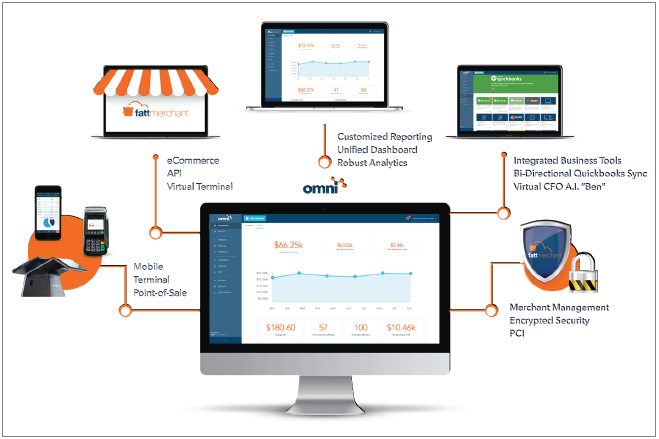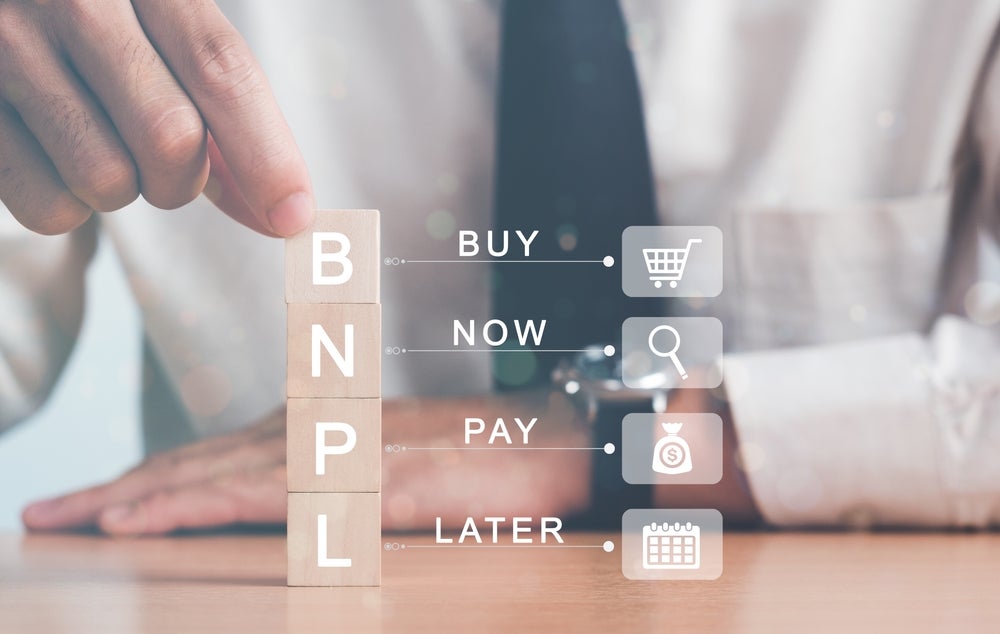Fattmerchant is disrupting the US payments industry with a subscription-based pricing model. Robin Arnfield talks to Suneera Madhani, CEO of the Orlando, Florida-based payments facilitator
As well as flat rate pricing, Fattmerchant makes life easier for small and medium-sized businesses (SMBs) with a single omnichannel processing and analytics platform.
Omni enables merchants to accept payments through multiple channels – including mobile devices, traditional POS terminals and the web – and lets them access detailed payment data and customer analytics information across all these channels.
Omni also offers bidirectional integration with popular business tools such as QuickBooks Online, so merchants can report and send payments to their particular e-commerce platform.
Omni users can accept card-present and card-not-present payments from EMV terminals, mPOS devices, virtual terminals and e-commerce sites, all from a single API. They can track data such as sales trends, customer loyalty information, inventory management, transaction histories, batch reports and account information. Merchants can accept cash, gift cards, debit cards, credit cards and Automated Clearing House payments via Omni.
Founded in 2014, Fattmerchant raised $10.5m in July 2018 in a Series C funding round led by Atlanta-based Fulcrum Equity Partners. The funding was used to develop Omni, which was launched in October.
How well do you really know your competitors?
Access the most comprehensive Company Profiles on the market, powered by GlobalData. Save hours of research. Gain competitive edge.

Thank you!
Your download email will arrive shortly
Not ready to buy yet? Download a free sample
We are confident about the unique quality of our Company Profiles. However, we want you to make the most beneficial decision for your business, so we offer a free sample that you can download by submitting the below form
By GlobalDataTo date, Fattmerchant has raised almost $20m in capital and in 2018 processed in excess of $2bn in transactions. “We’re growing by 100% year on year,” notes CEO Suneera Madhani. “Our name is an abbreviation for fast affordable transaction technology.”
Pain points
“In 2011-2012, I was working in the payments industry selling merchant services to SMBs,” Madhani continues.
“One of the biggest pain points I heard about from them, was the lack of transparency on credit card processing fees. Merchants view acquirers and processors as a necessary evil, but have no loyalty to them. They have a very poor experience of customer service, and don’t get any valued added from traditional acquirers besides processing their transactions. The acquirers just compete by undercutting each other by basis points.”
As a millennial, Madhani was very comfortable with consumer subscriptionbased online services, such as Netflix, which were very new at the time. So she thought: why not offer subscription-based merchant services with a fixed monthly fee instead of variable, percentage-based fees and hidden charges? However, none of the 12 payments companies Madhani suggested this idea to were interested so, in 2014, she started her own company.
Instead of charging an ad valorem fee per transaction, Fattmerchant has a flat subscription.
“Merchants pay us a monthly membership fee, but we can’t get rid of the direct cost of interchange,” Madhani says.
“So there’s still interchange in our model. But, while acquirers charge a 30-40% markup on top of the Visa and Mastercard fee, we removed the middleman and charge the SMB directly for the Visa and Mastercard fee.”
Fattmerchant charges $99 per month if merchants process under $500,000 annually. Plans start at $199 per month if merchants process over $500,000 annually.
“In the last four years, we’ve experienced very rapid growth and seen a lot of traction, as we’ve benefited from a first-to-market advantage,” says Madhani.
“We’ve invested our own technology in developing a solution that enables SMBs to accept payments from one single platform on multiple channels. It works with POS terminals, mobile payments and e-commerce. Our fee really isn’t for processing the payment, but for the added value we provide through our technology.”

MPOS
Fattmerchant has developed its own proprietary mPOS solution which is similar to Square Register for the iPad.
“With mPOS, we’ve noticed that one of our biggest markets is services companies – both professional services firms or non-professional services like builders, lawn-care providers or plumbers,” Madhani says.
“They have a back office that sends invoices, and also have field reps, but they’ve been using a mobile company to take payments on mPOS devices and a separate invoicing platform in the back office, which don’t talk to each other.”
These services companies can use Fattmerchant’s mPOS devices to take payments in the field, and its back-office invoicing system, and the two systems are integrated. The field agents swipes the payment card, which is then tokenised.
“As we’re PCI-compliant, the back-office person sees the payment but not the card number,” says Madhani.
“The back-office person can put the client on a recurring invoice or set them up with a one-time invoice. If the bill changes, either the mobile field agent can make the changes, or the backoffice person can make the changes for the field agent instantly without having to disrupt the transaction. For example, the field sales person can see that the back office quoted $200, but the job really should be charged at $500, so the amount needs to be changed.”
Making things easier
Madhani says Fattmerchant is not just about price savings but about fee transparency and making payments easier for SMBs.
“The big pain point for SMBs is a disjointed payments experience,” she says.
“The example I use is a fictitious firm called Sally’s Catering, which has a traditional POS terminal in its store. To accept payments on the go at trade shows and food markets, it uses an mPOS device. For invoicing for online catering orders – for weddings, for example – the firm uses QuickBooks. It also has an online shopping cart for selling its cakes on its website.”
So, Sally’s Catering has four types of payment account and payment solution – its bank for its POS processing, Square for mPOS, Shopify for e-commerce and QuickBooks for invoicing – and four sets of fees.
“Yet none of these systems are integrated with the others,” Madhani says.
“The unique point about Omni is that each channel talks to the others, and the platform offers one single merchant account, including cards on file and invoicing.”
In Sally’s Catering’s bricks-and-mortar store, an employee using Omni can take a card payment from a customer. “The customer’s card number is then on file for when the store sends them an invoice,” says Madhani.
“If the customer makes a deposit, the system will automatically remind the merchant to collect the balance.” Merchants can keep their existing payment systems, as Fattmerchant is able to integrate Omni with whatever solution the client is already using, Madhani says.

Payments facilitation
As a payments facilitator, Fattmerchant is able to consolidate its total payment volumes in order to get a good deal on interchange for its clients. All Fattmerchant’s transactions are processed via WorldPay.
“We control everything on the transaction end, but WorldPay is our back-end clearing house,” says Madhani.
“Our SMBs pay 1.5- 2% for using Visa and Mastercard’s networks, which means they are getting the credit card processing rate that the big merchants like Walmart pay.”
Madhani says that, despite huge inroads by mobile payments and e-commerce, 40-50% of merchants still want traditional POS terminals.
“Right now, traditional POS terminals don’t provide any additional value and there’s no analytics when someone uses a terminal,” she says.
“But we offer merchants real-time analytics such as identifying returning customers and lifetime customers. We tell them how their sales are performing month on month and what is the average lifetime value for their customer. The merchant can then create marketing offers based on this data. “Our real challenge is to educate customers,”
Madhani continues. “Many of them think our model is too good to be true. We have to spend time on education, as people are so used to the traditional payment processing fee-charging model. “When I started Fattmerchant, the subscription model was very new, so it was hard to explain to people.”







